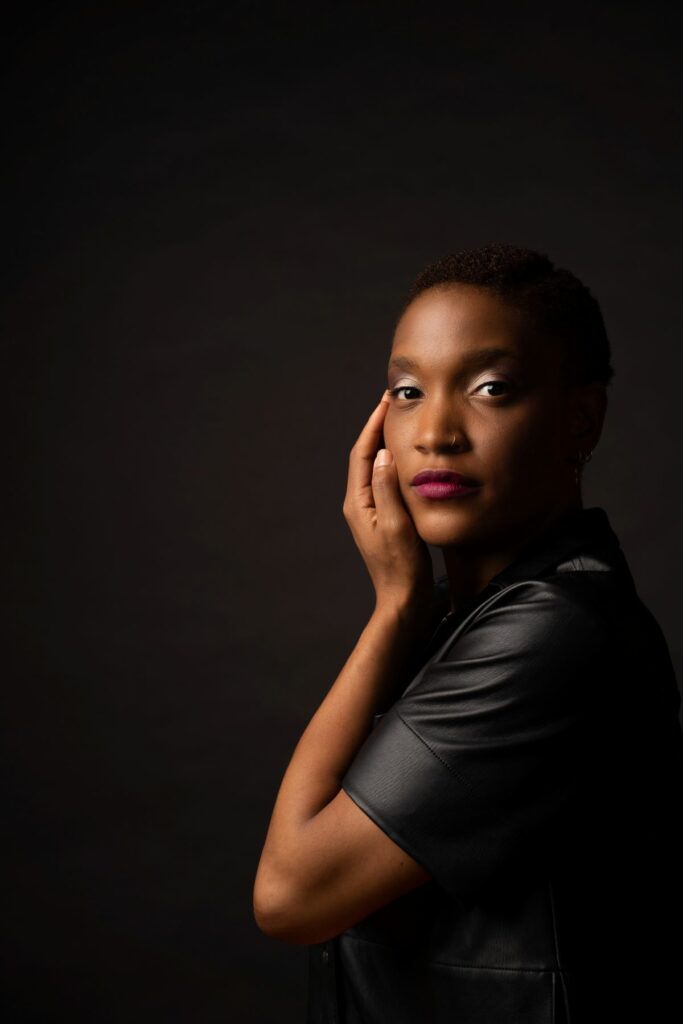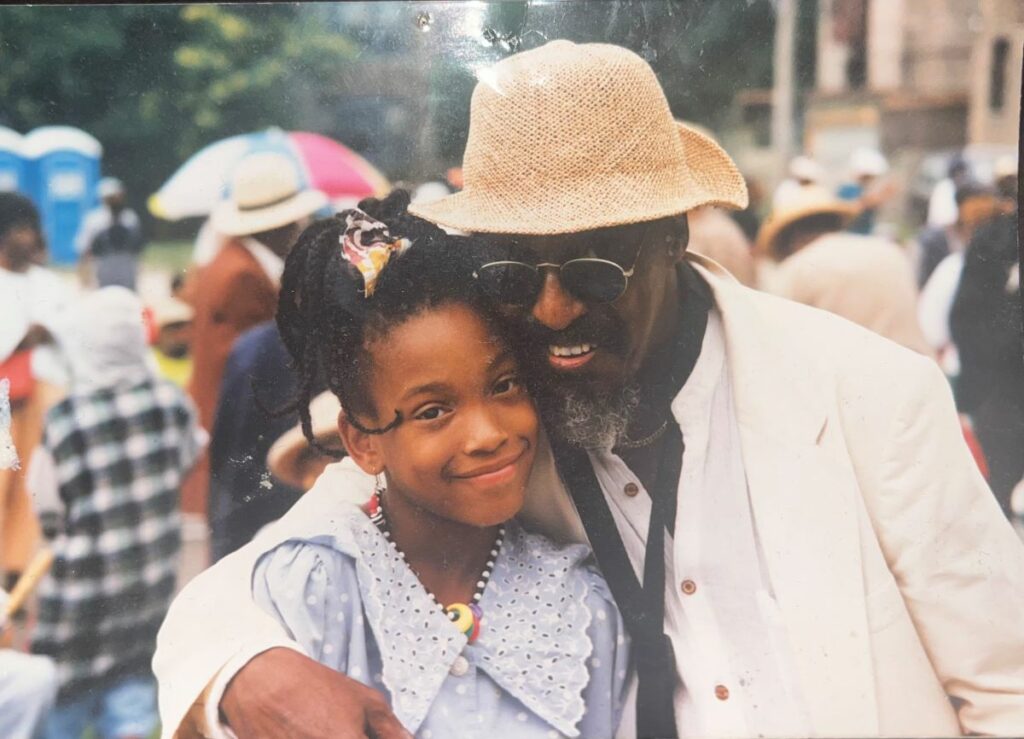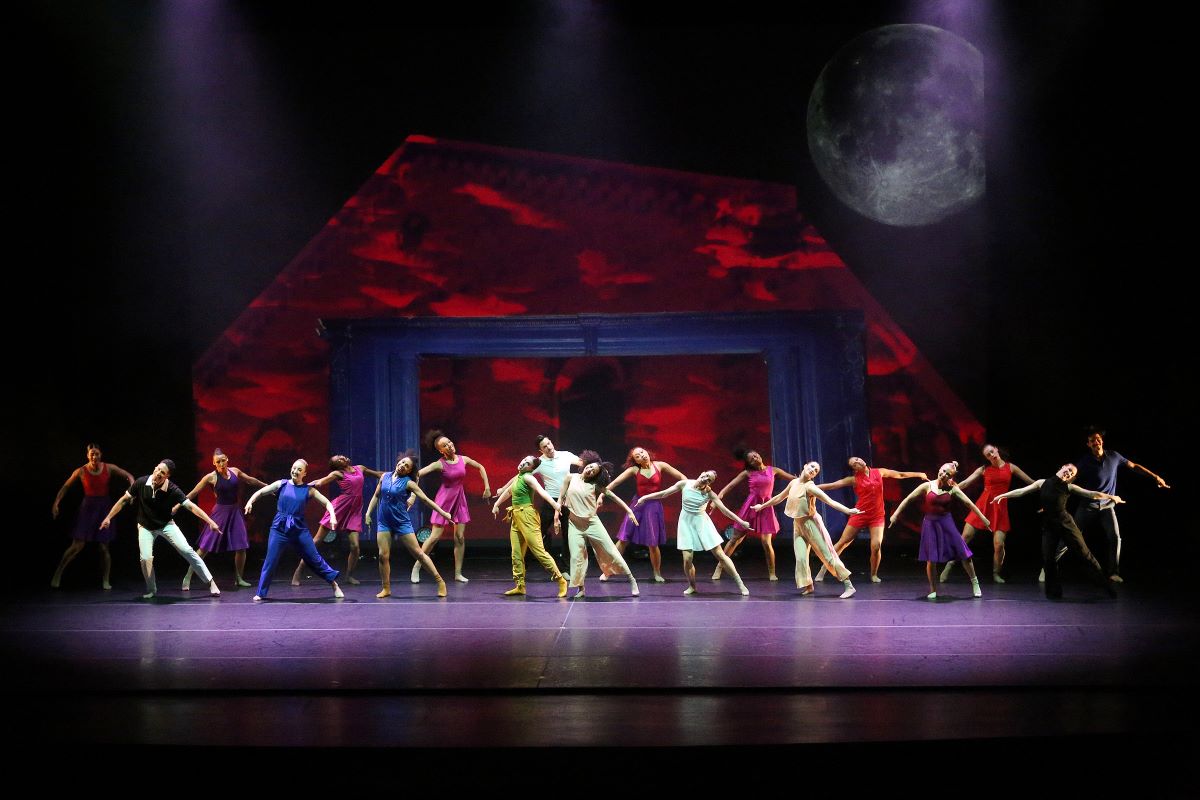On a chilly Saturday evening, patrons young and old turned out to attend the South Chicago Dance Theater’s debut performance of Memoirs of Jazz in the Alley at the Auditorium Theatre in downtown Chicago. The one-night-only June 10 show featured a company of twenty artists and was accompanied by Chicago’s own Isaiah Collier and the Chosen Few performing a live score of newly arranged jazz standards, including John Coltrane’s “A Love Supreme” and Dizzy Gillepie’s “A Night in Tunisia.”
Historically, Jazz in the Alley was known as a meeting place for some of the country’s most prominent musicians, visual artists, poets, activists, and organizers. It was an event that occurred every Sunday in an alley between 49th and 50th, between St. Lawrence and Champlain. Jazz in the Alley began in a garage owned by Arthur Pops Simpson and was co-founded by the late musician and educator Jimmy Ellis. It existed until 1980 when the police closed it down for good during Mayor Jane Byrne’s administration.
The dance concert, with a running time of one hour and fifteen minutes, was written, directed, and choreographed by South Chicago Dance Theater founder and executive artistic director, Kia S. Smith. It also included a series of uniquely designed video projections created by Chicago scenic designer Rasean Davonte Johnson.
While Smith’s production was characterized as a work of historical fiction, it is said to have traced the experiences of imagined characters based upon images found in an online gallery of photos taken by Ellis, Smith’s father.
Smith was, in fact, the daughter of not one, but two parents with a passion for jazz. On the one hand, Smith’s father was a famed jazz saxophonist, who played with the likes of Nat King Cole, Sarah Vaughan, Dinah Washington, Earl Hines, and others.
And on the other hand, Smith credits the experience of sneaking into the historic Jazz Showcase in Chicago to watch jazz performances with her late mother as a pivotal moment in her life that would turn out to be “the sound of my childhood,” she said.
Smith’s production told the dynamic story of a mysterious Lady in Red (played by Kim Davis) and the often tumultuous relationship that plays out in the alley between her and a relentless male suitor (played by Elijah Richardson).
Throughout the evening, the audience was treated to a colorful assemblage of talented dancers who, through their thoughtfully choreographed moves, helped bring to life Smith’s homage to the historic sights, sounds, and people who made Jazz in the Alley a movement during the 1960s and 1970s.
Born and raised on the South Side of Chicago, Smith’s early training included the Hyde Park School of Dance. She went on to obtain a Bachelor of Fine Arts in dance from Western Michigan University and a Master of Fine Arts from the University of Wisconsin-Milwaukee where she was an Advanced Opportunity Program Fellow.
In 2017, Smith launched the South Chicago Dance Theater (SCDT)—a multicultural organization aiming to preserve the art of dance through quality performances and educational opportunities. Now in its sixth year, the theater, like Smith’s career, has continued to flourish. Since its initial launch, the company has toured regionally, nationally, and internationally.
On the week of her debut, I caught up with Smith to discuss her company, the SCDT, the influence of jazz in her life, and her debut at the Auditorium Theatre. The following conversation has been edited for length and clarity.
[W]hat’s the history behind your theater? Why a dance theater?
It sounds silly but I grew up always wanting to have a dance company. That’s the most I can really say. I grew up around the 95th Street area and I just used to watch dance on TV all the time. And my family really couldn’t afford to put me in dance classes, but I had this vision from being a little girl that I wanted to have a dance company one day because I just watched it on TV and could see myself doing something like that. I went to Crane College Prep and the Joel Hall dancers came to my high school and did an outreach program for a year. From there I got a scholarship to go train at Joel Hall Jazz Company and then I ended up going to college for it. One thing kinda led to another and I just pursued my dream of having my own company one day. So in 2017, I enrolled in a graduate program, and at the same time I started South Chicago Dance Theater, and I’ve just been doing it ever since.

What does Jazz in the Alley mean?
Yeah so, Jazz in the Alley is something that my dad kind of co-founded back in the 1960s and 1970s. And, it was happening before then. A man named Arthur Pops Simpson used to be in his garage every Sunday spinning records and it became a competition amongst live DJs that would come and spin records and people would come and listen. But one Sunday, my dad brought his saxophone to Simpson’s garage and then, you know, he started playing live and people enjoyed it. And then it just became a thing that my dad would come and then other musicians started coming. And before you knew it, Jazz in the Alley was like this cultural happening that was specific to the South Side and that I think was really important to Chicago’s history and jazz in Chicago. You know, before the Chicago Jazz Festival was happening, or all these big things, as we know, Jazz in the Alley was happening and it was accessible. All kinds of people would come together and listen to music. It was special because not everyone could go to the Regal Theater or go wherever the musicians were playing in town and get a ticket to go. But those musicians would come to Jazz in the Alley and just play for the community. And so, I think that’s really special. It inspired me and I wanted to kinda pay an homage to that.
Did you have the opportunity to decide what you wanted to perform and all that?
Yeah, so, it’s funny. So Memoirs of Jazz in the Alley—I was working on that for a whole year and I was planning to do it well before the Auditorium Theatre had reached out and asked us if we would come perform. So if we weren’t at the Auditorium, we’d be at some other theater doing the show. But then when they reached out and said “We’d love to have you next spring,” I said, “Yes, and actually, we’re doing a show called Memoirs of Jazz in the Alley, all about the South Side and this movement called, Jazz in the Alley.” It was kinda perfect because the series that they curate is called, ‘The ‘Made in Chicago Series.’ So, it’s companies that literally are just, you know, founded and formed in Chicago. I felt like it was such a good fit that we could do something that was about the South Side.
How much preparation goes into a performance such as Memoirs of Jazz in the Alley?
That’s a good question. So, Chicago Dancemakers Forum is an organization in the city that provides grants to individual choreographers. And, they’re actually the only organization in Chicago that does anything like this specifically for choreographers. So, I applied for a grant from them and this was in 2022. I was what they call a lab artist. So, it means that I got to spend a whole year doing research for a new piece. And, actually, they were the ones that gave me the idea because I said I really wanted to make a big work. I want to have live music, and they were like, well, you have all this jazz lineage and history. Why don’t you just make a jazz piece? And, so when they told me that, [it] gave me kind of a prompt—it almost freed me. I’ve never made an evening-length work before. So, making a jazz piece, in some ways felt safe because I was like okay, I know this world. I know this music. I can do this. So, it took me a year to do a lot of the thinking and the research but the actual creative process, I think we started in December of 2022. And we just kind of finished this month.

Were your parents able to see your productions?
Not so much. I mean, my mom passed away when I was fourteen, like my freshman year of high school. And, I actually didn’t start dancing until I was Sixteen. Before I was doing dance, I used to do this group called Music Theater Workshop that actually brought kids from all over Chicago to the Field Museum to write and produce their own shows. And, so my mom saw me do some of those. But, she passed away before I started dancing really. And, then my dad definitely saw some of my shows. He came to see me when I was in college but I danced outside of Chicago for a lot of my actual career as a performer. By the time I had started my company, my dad was much older. So even though so much of my mom and dad are in this piece, it’s almost for me an opportunity to engage in a positive way with their memories because I don’t get to share the work with them.
Where can we catch up with the South Chicago Dance Theater next?
After the Auditorium show, we actually have a summer break. So, we don’t have anything for the rest of June or July. But our next thing is actually a city-wide event that lots of different companies perform in called Dance for Life. So, we’re going to be participating in that in August as a performer. People can check out our website or social media to see where we’re at and what we have going on for season seven.
Dierdre Robinson is a writer and accounting manager in Chicago. She has a BA in Journalism from Michigan State University. She last wrote about Chicago’s Poet Laureate, avery r. young.



